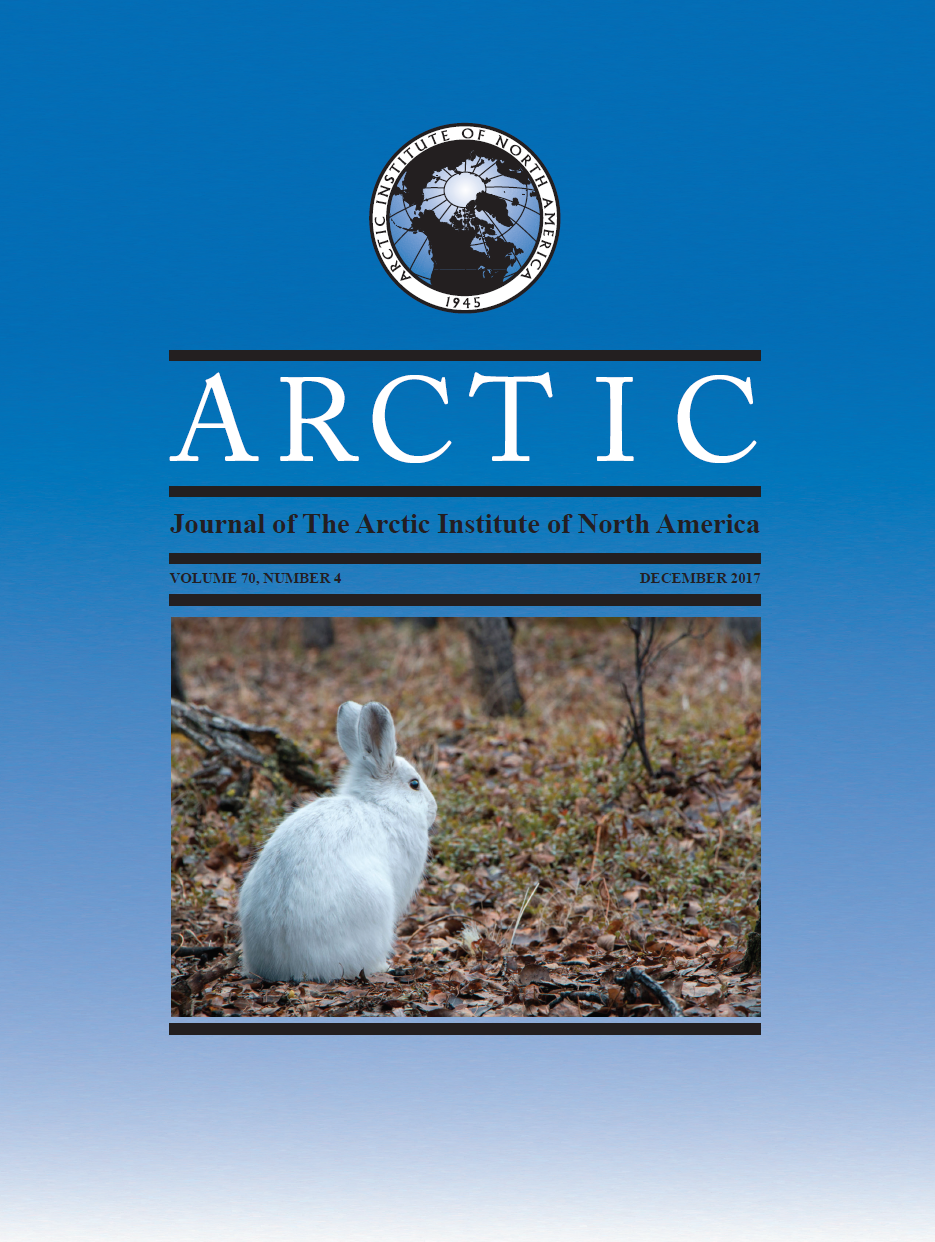Episodic and Systematic Tree Ring-Width Variation (AD 1763–2013) in the Takhini Valley, Southwest Yukon, Canada
DOI :
https://doi.org/10.14430/arctic4685Mots-clés :
dendrochronologie, climat, histoire de la forêt, humidité, paléoclimat, largeur des anneaux de croissance, épinette blanche, YukonRésumé
L’analyse des anneaux de croissance de 764 épinettes blanches de l’Ouest (Picea albertiana) de la vallée Takhini, dans le sud-ouest du Yukon, a été effectuée dans le but d’évaluer les variations à court et à long termes en matière de croissance et de climat local. La chronologie qui en a découlé s’étend sur la période allant de 1763 à 2013 de notre ère. La régression polynomiale (R = 0,720, p < 0,001) a permis de déterminer que les valeurs des largeurs d’anneaux de croissance du segment chronologique précédant 1840 étaient en bas de la normale (moyenne de 0,64, avec de modestes variations), mais que les valeurs des largeurs d’anneaux du segment subséquent affichaient de plus grandes variations et une augmentation continue des valeurs des largeurs d’anneaux de croissance (moyenne de 0,89) jusque vers 1920. Après 1930, ces valeurs ont recommencé à augmenter (moyenne de 1,06) pour afficher une variation 51 % plus élevée que celle enregistrée auparavant. Après 1930, les valeurs maximales des largeurs d’anneaux correspondaient au double de celles du début des années 1800. Les valeurs des largeurs d’anneaux n’ont pas été corrélées avec les variables des températures de l’air (à l’exception des minimums de septembre), mais ont fait l’objet d’une corrélation faible et positive (r < 0,35) avec les variables des précipitations. Les valeurs des largeurs d’anneaux de croissance ont fait l’objet d’une corrélation modérée avec les valeurs annuelles des indices de chaleur et d’humidité (r = −0,415, p < 0,001), et d’une corrélation plus forte avec les valeurs des largeurs d’anneaux de moins de 1,1 (R = −0,631, p < 0,001). Par conséquent, la chronologie des largeurs d’anneaux de croissance a été interprétée à partir de la perspective du bilan d’eau du sol et les changements possibles de températures à long terme ont été évalués à partir de sources archivées. Ces dernières ont permis de suggérer une augmentation de 2,1˚à 3,1 ˚C depuis le début des années 1800. Les valeurs extrêmes et les segments chronologiques des largeurs d’anneaux de croissance ont été associés à des événements environnementaux connus.


